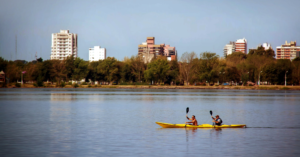California Green Building Code (CALGreen) proposes to prohibit smoking in the public areas of the building except in designated smoking areas. Public areas include all common areas that are part of the core and shell that are not tenant spaces. Locate any exterior designated smoking areas at least 25 feet away from entries, outdoor air intakes and operable windows. Smoking areas to effectively contain, capture and remove ETS from the building, it must be directly exhausted to the outdoors with no re-circulation of ETS-containing air to the non-smoking area of the building.
CALGreen Code Section 5.504.7: Environmental tobacco smoke (ETS) control.
Where outdoor areas are provided for smoking, prohibit smoking within 25 feet of building entries, outdoor air intakes and operable windows and within the building as already prohibited by other laws or regulations; or as enforced by ordinances, regulations or policies of any city, county, city and county, California Community College, campus of the California State University, or campus of the University of California, whichever are more stringent. When ordinances, regulations or policies are not in place, post signage to inform building occupants of the prohibitions
Intent:
For buildings with smoking prohibitions, and in those instances where outdoor areas are dedicated for the use of smokers, this requirement is intended to improve indoor air quality and to protect nonsmokers from second-hand smoke. State law prohibits smoking inside most buildings, and many local jurisdictions and college campuses have regulations banning smoking outside of buildings within certain distances to building entrances, windows and air intakes. Assembly Bill 1807 (Chapter 1047, Statutes of 1983) details the public policy of the state that emissions of toxic air contaminants should be controlled to levels that prevent harm to the public health.
Compliance Method:
Include in the construction documents a signage specification that prohibits smoking for an outdoor area within 25 feet of building entries, outdoor air intakes and operable windows. Check with the local authority having jurisdiction to see if there is a more restrictive smoke-free area ordinance.
Suggestion:
In order to clarify sign placement and smoking area(s), show on one or all of the following drawings: site plan, floor plan, elevations and/or detail sheet.
Enforcement:
Plan intake: The plan reviewer should confirm in the construction documents that, if an outdoor smoking area is shown, signage is specified and appropriately located.
On-site enforcement: The inspector should review any outdoor smoking areas indicated on the permit set and verify that proper signage is installed.
(Excerpted from ‘Guide to the 2019 California Green Building Standards Code Nonresidential’ – Chapter 5)




